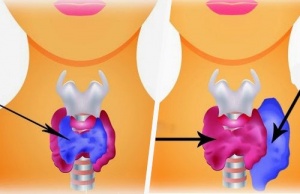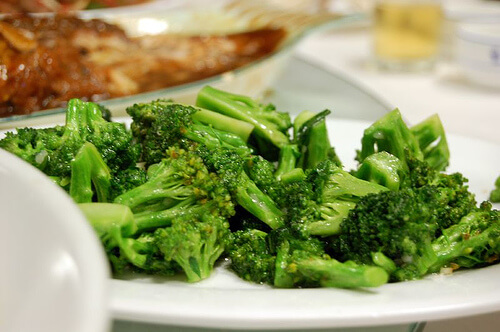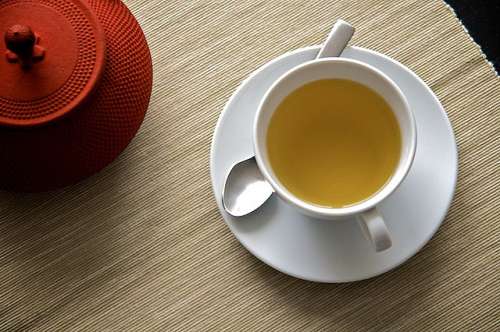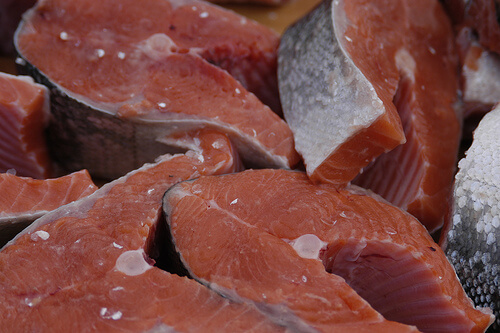The Difference Between Hypothyroidism and Hyperthyroidism

We often hear about these two illnesses: hypothyroidism and hyperthyroidism, yet most people don’t know the difference. Today we’ll explain the symptoms of each disease, as well as their possible causes and some health tips to improve your quality of life.
What are thyroids and how are they related to hypothyroidism and hyperthyroidism?
The thyroid is a butterfly-shaped gland located on top of the trachea that regulates the body’s metabolism and also participates in the production of hormones, especially of thyroxin and triiodothyronine. This is where the roots of hypothyroidism and hyperthyroidism lie.
The thyroid is controlled by the hypothalamus and the pituitary gland.
Hyperthyroidism
In the case of hyperthyroidism, the gland functions excessively, as the “hyper” prefix suggests, which also causes the excessive secretion of hormones. It affects approximately 1% of the population, especially women between the ages of 30 and 40.
The most obvious sign is the appearance of a goiter (a visible enlargement of the thyroid). The most common symptoms are tachycardia, weight loss, nervousness, trembling, insomnia, and excessive sweating.
Causes of hyperthyroidism
- Graves’ disease
- Excessive consumption of foods with iodine or direct exposure to iodine
- Inflammation in the thyroid due to viral infections, medications, or pregnancy
- Benign tumors in the thyroid or pituitary gland
- Tumors in the testicles or ovaries
- Abuse of medication with the thyroid hormone
Natural Treatment
You should always follow the medical treatment prescribed to you, but certain foods can help you feel better:
- Cabbage
- Broccoli
- Radish
- Spinach
- Soy
- Beans
- Peaches

Other Tips:
First of all, you should also avoid foods rich in iodine. Otherwise, some good foods to include in your diet if you have hyperthyroidism are: eggs, parsley, fish and seafood, almonds, apricots, etc.
Green tea, motherwort, melisa, and bugleweed are also very beneficial.
You should also exercise frequently to regulate your metabolism and avoid stimulants as much as possible, because these will make you feel worse:
- Alcohol
- Coffee
- Soda

Hypothyroidism
Hypothyroidism is the more common condition between hypothyroidism and hyperthyroidism because it affects a higher proportion of the population. It’s experienced by 3% of the population, especially in women over 50 years of age or those who have just given birth. Hypothyroidism is the reduction of levels of thyroid hormones in blood plasma and it also has symptoms like fatigue, exhaustion, muscle weakness, coldness, inexplicable weight change, depression, or emotional imbalances.
There are other more subtle symptoms that can help you detect this disease that’s otherwise difficult to detect: pale or yellowish skin, fluid retention, hair loss, a lack of eyebrows, and very dry skin.
Causes of Hypothyroidism
- Different types of thyroiditis
- Post child birth (and generally after experiencing hyperthyroidism as well)
- Birth defects
- Radiation therapy on the neck
- Anti-thyroid medication
- Lithium treatments
- Chronic lack of iodine
Natural Treatment
Besides the treatment prescribed by your doctor, we also recommend eating the following foods to increase your iodine levels:
- Parsley
- Eggs
- Apricot
- Blue fish
- Bananas
- Almonds
- Watercress
- Cucumbers
- Peas
- Apples
- Figs
- Iodized salt or sea salt
- Seafood and algae rich in iodine, such as kelp or fucus
- Fish
- Seafood
- Quince jelly

Other Tips:
If you don’t like algae, which we recommend because this food doesn’t not contain toxic substances, you can take them in pill form instead. They not only give you iodine, but also many other minerals and essential amino acids that are very beneficial for the body.
Another option is to make an algae salt. Grind sea salt and the algae of your choice together then keep the container closed. The salt will also act as a preservative. You can use it in the same way as normal salt when cooking soups, stews, etc.
You should avoid the following foods because they block iodine absorption: cabbage, Brussels sprouts, cauliflower, broccoli, spinach, soy, peaches, beans, and processed or refined foods.
Other good tips are to make yourself a mint and ginger tea and also cook food with small amounts of cayenne pepper.
Images courtesy of Ulterior Epicure, Daniel Friedle y Pokrzywinski
All cited sources were thoroughly reviewed by our team to ensure their quality, reliability, currency, and validity. The bibliography of this article was considered reliable and of academic or scientific accuracy.
- Imam, S. K. (2016). Hyperthyroidism. In Thyroid Disorders: Basic Science and Clinical Practice. https://doi.org/10.1007/978-3-319-25871-3_8
- Ross, D. S., Burch, H. B., Cooper, D. S., Greenlee, M. C., Laurberg, P., Maia, A. L., … Walter, M. A. (2016). 2016 American Thyroid Association Guidelines for Diagnosis and Management of Hyperthyroidism and Other Causes of Thyrotoxicosis. Thyroid. https://doi.org/10.1089/thy.2016.0229
- Shah, M., & Gharib, H. (2014). Hypothyroidism. In Endocrinology and Diabetes: A Problem-Oriented Approach. https://doi.org/10.1007/978-1-4614-8684-8_3
- Autónomos S, Salud B, Salud P, tiroides T, tiroides T. Todo sobre la tiroides. Sanitas. 2018. https://www.sanitas.es/sanitas/seguros/es/particulares/biblioteca-de-salud/prevencion-salud/san005158wr.html
- El departamento de endocrinología del Instituto Universitario Dexeus. Tiroides. Qué es, qué función tiene? http://www.endocrino.cat/es/tiroides.cfm/ID/4576/ESP/tiroides-es-funcion-tiene-.htm
- Departamento de Salud y Servicios Humanos de Estados Unidos. Enfermedad de la tiroides. https://espanol.womenshealth.gov/a-z-topics/thyroid-disease#
- Endocrinol Metab (Seoul). 2014 Sep; 29(3): 240–247. Published online 2014 Sep 25. Effects of Increased Iodine Intake on Thyroid Disorders. doi: 10.3803/EnM.2014.29.3.240
- Biblioteca Nacional de Medicina de los Estados Unidos. Hipertiroidismo. https://medlineplus.gov/spanish/ency/article/000356.htm
- Universidad Clínica de Navarra. Hipertiroidismo. https://www.cun.es/enfermedades-tratamientos/enfermedades/hipertiroidismo
This text is provided for informational purposes only and does not replace consultation with a professional. If in doubt, consult your specialist.








